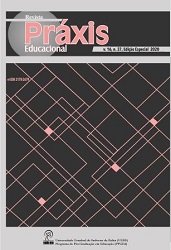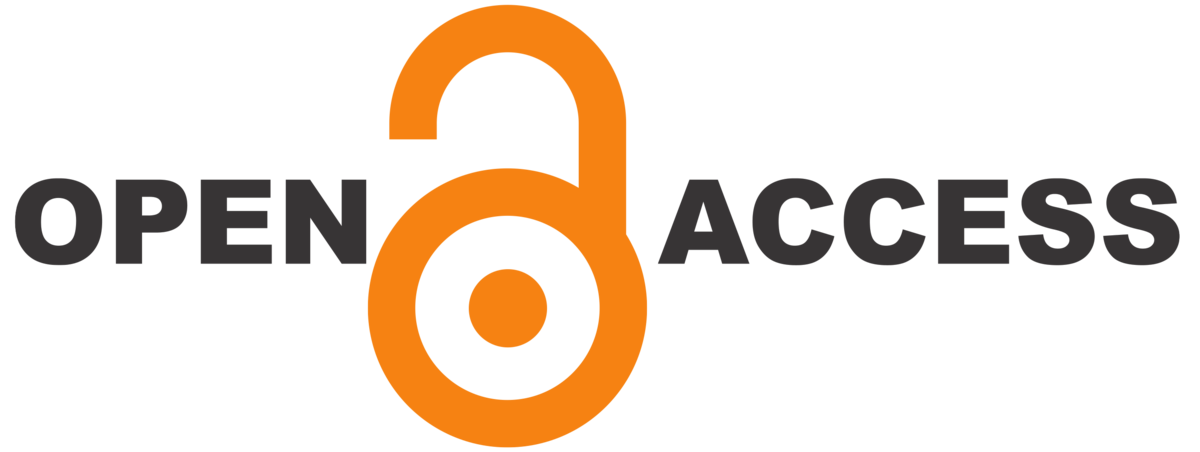REACHING CONSENSUS: A SCOPING REVIEW ON SCHOOL-BASED COMPREHENSIVE SEXUALITY EDUCATION PROGRAMS (CSE)
DOI:
https://doi.org/10.22481/praxisedu.v16i37.6175Palavras-chave:
Revisão do escopo, Educação Integral em Sexualidade, Base escolar, JuventudeResumo
A educação sexual nas escolas é um tema quente em parte porque está intimamente entrelaçada com interpretações sociais e parentais do certo e do errado. Este estudo é uma revisão de escopo que foi conduzida em seis etapas: (1) identificação da questão de pesquisa, (2) identificação de estudos relevantes, (3) seleção de estudos, (4) extração de dados, (5) resumo e relatório da (6) consulta com as partes interessadas. Os currículos foram avaliados pela Ferramenta de Avaliação de Currículo (SIECUS) e as diretrizes foram avaliadas pela avaliação das diretrizes para a ferramenta de pesquisa e avaliação (AGREE II). Após a revisão de 24 programas extraídos de 50 estudos, a maioria dos quais (90%) foram projetados e utilizados em países em desenvolvimento, cinco perguntas foram respondidas. Finalmente, as diretrizes “Diretrizes para o componente de educação em saúde sexual da Educação Integral em Saúde” e os currículos “FLEHI, WSWM, Tuko Pamoja” foram recomendados com modificações. Esta análise mostra que os programas de CSE não são apenas intervenções de baixo custo, mas também fazem parte dos direitos sexuais dos adolescentes. No início do programa, pode haver muitas barreiras sociais e culturais nos países em desenvolvimento, mas uma vez que um programa cultural rigoroso é projetado, resultados bem-sucedidos podem ser alcançados. Portanto, é altamente recomendável projetar esses programas com base na cultura iraniana.
Downloads
Referências
Adolescent Health Research Priorities: Report of a Technical Consultation. Geneva: World Health Organization. 2015.
Apter, D. (2011). Recent developments and consequences of sexuality education in Finland. Paper presented at the FORUM Sexuality Education and Family Planning.
Behague, S., Christenson, K., Martin, S., Wysong, M., & Kibusu, K. (2006). Tuko Pamoja: adolescent reproductive health and life skills curriculum.
Berkowitz, M. W., & Bier, M. C. (2007). What works in character education. Journal of Research in Character Education, 5(1), 29.
Berne, L., Huberman, B., & Alford, S. (1999). European approaches to adolescent sexual behavior and responsibility: executive summary and call to action. Washington, DC: Advocates for Youth.
Chandra-Mouli, V., Plesons, M., Hadi, S., Baig, Q., & Lang, I. (2018). Building support for adolescent sexuality and reproductive health education and responding to resistance in conservative contexts: Cases from Pakistan. Global Health: Science and Practice, 6(1), 128-136.
Chin, H. B., Sipe, T. A., Elder, R., Mercer, S. L., Chattopadhyay, S. K., Jacob, V., . . . Griffith, M. (2012). The effectiveness of group-based comprehensive risk-reduction and abstinence education interventions to prevent or reduce the risk of adolescent pregnancy, human immunodeficiency virus, and sexually transmitted infections: two systematic reviews for the Guide to Community Preventive Services. American journal of preventive medicine, 42(3), 272-294.
Collins, C., Alagiri, P., Summers, T., & Morin, S. F. (2002). Abstinence only vs. comprehensive sex education: What are the arguments? What is the evidence?
Consortium, A. N. S. (2009). Appraisal of guidelines for research and evaluation II instrument. Retrieved May, 12, 2011.
Farahani, F. K. A., Shah, I., Cleland, J., & Mohammadi, M. R. (2012). Adolescent males and young females in Tehran: differing perspectives, behaviors and needs for reproductive health and implications for gender sensitive interventions. Journal of Reproduction & Infertility, 13(2), 101.
Fonner, V. A., Armstrong, K. S., Kennedy, C. E., O'Reilly, K. R., & Sweat, M. D. (2014). School Based Sex Education and HIV Prevention in Low- and Middle-Income Countries: A Systematic Review and Meta-Analysis. PloS one, 9(3), e89692. doi: 10.1371/journal.pone.0089692
Haruna, H., Hu, X., & Chu, S. K. W. (2018). Adolescent School-Based Sexual Health Education and Training: A Literature Review on Teaching and Learning Strategies. Glob. J. Health Sci, 10, 172. http://www.actionhealthinc.org/publication/. . https://portal.ct.gov/.../Sexual-Health...Health.../Sexual-Health-Education- Curriculum-Framework.
Huaynoca, S., Chandra-Mouli, V., Yaqub Jr, N., & Denno, D. M. (2014). Scaling up comprehensive sexuality education in Nigeria: from national policy to nationwide application. Sex Education, 14(2), 191-209. doi: 10.1080/14681811.2013.856292
Information, S., & States, E. C. o. t. U. (2004). Guidelines for comprehensive sexuality education: Kindergarten-12th grade: Author New York.
Initiative, F. o. S. E. (2012). National sexuality education standards: Core content and skills, K-12 [a special publication of the Journal of School Health]. Retrieved May 23 2014 from.
Kirby, D. (2002). The impact of schools and school programs upon adolescent sexual behavior. Journal of sex research, 39(1), 27-33.
Kirby, D., & Laris, B. (2009). Effective curriculum‐based sex and STD/HIV education programs for adolescents. Child Development Perspectives, 3(1), 21-29.
Kirby, D. B. (2008). The impact of abstinence and comprehensive sex and STD/HIV education programs on adolescent sexual behavior. Sexuality Research & Social Policy, 5(3), 18.
Kirby, D. B., Laris, B., & Rolleri, L. A. (2007). Sex and HIV education programs: their impact on sexual behaviors of young people throughout the world. Journal of Adolescent Health, 40(3), 206-217.
Kivela, J., Haldre, K., Part, K., Ketting, E., & Baltussen, R. (2014). Impact and cost-effectiveness analysis of the national school-based sexuality education programme in Estonia. Sex Education, 14(1), 1-13.
Kivela, J., Ketting, E., & Baltussen, R. (2013). Cost analysis of school-based sexuality education programs in six countries. Cost effectiveness and resource allocation, 11(1), 17.
Levac, D., Colquhoun, H., & O'Brien, K. K. (2010). Scoping studies: advancing the methodology. Implementation science, 5(1), 69.
Lima, D. K. S., Schoeller, S. D., da Silva Knihs, N., Vargas, C. P., Tholl, A. D., Lopes, S. G. R., . . . de Almeida Hammerschmidt, K. S. (2017). Protocol for a scoping review of skin self-care of people with spinal cord injury. BMJ open, 7(9), e017860.
Mathews, C., Aarø, L., Grimsrud, A., Flisher, A., Kaaya, S., Onya, H., . . . Klepp, K.-I. (2012). Effects of the SATZ teacher-led school HIV prevention programmes on adolescent sexual behaviour: cluster randomised controlled trials in three sub-Saharan African sites. International Health, 4(2), 111-122.
Mohammadi, M. R., Mohammad, K., Farahani, F. K., Alikhani, S., Zare, M., Tehrani, F. R., . . . Alaeddini, F. (2006). Reproductive knowledge, attitudes and behavior among adolescent males in Tehran, Iran. International family planning perspectives, 35-44.
Organization, W. H. (2017). Adolescent health research priorities: report of a technical consultation, WHO reference number: WHO: FWC/MCA/15/07.
Rijsdijk, L. E., Bos, A. E., Ruiter, R. A., Leerlooijer, J. N., de Haas, B., & Schaalma, H. P. (2011). The World Starts With Me: A multilevel evaluation of a comprehensive sex education programme targeting adolescents in Uganda. BMC public health, 11(1), 334.
Roy, S., Roy, S., & Rangari, K. (2007). Comprehensive health care including sexual and reproductive health of adolescents and youths is of vital importance to the nation. Health and Population-Perspectives and Issues, 30(4), 243-267.
Sajjadi, M., Moshki, M., Abasnezhad, A., & Bahri, N. (2012). Educational needs of fathers about boys puberty period and its related factors. Zahedan Journal of Research in Medical Sciences, 14(2), 66-70.
Samadaee-Gelehkolaee, K., McCarthy, B. W., Khalilian, A., Hamzehgardeshi, Z., Peyvandi, S., Elyasi, F., & Shahidi, M. (2016). Factors Associated With Marital Satisfaction in Infertile Couple: A Comprehensive Literature Review. Global journal of health science, 8(5), 96.
Schutte, L., Meertens, R. M., Mevissen, F. E., Schaalma, H., Meijer, S., & Kok, G. (2014). Long Live Love. The implementation of a school-based sex-education program in the Netherlands. Health education research, 29(4), 583-597.
Stanger-Hall, K. F., & Hall, D. W. (2011). Abstinence-only education and teen pregnancy rates: why we need comprehensive sex education in the US. PloS one, 6(10), e24658.
Udegbe, B. I., Fayehun, F., Isiugo-Abanihe, U. C., Nwagwu, W., Isiugo-Abanihe, I., & Nwokocha, E. (2015). Evaluation of the implementation of family life and HIV education programme in Nigeria. African journal of reproductive health, 19(2), 79-92.
UNFPA. (2014). Operational Guidance for Comprehensive Sexuality Education: A Focus on Human Rights and Gender: UNFPA New York.
Wight, D., & Buston, K. (2003). Meeting needs but not changing goals: evaluation of in-service teacher training for sex education. Oxford Review of Education, 29(4), 521-543.
Wolfe, D. A., Crooks, C., Jaffe, P., Chiodo, D., Hughes, R., Ellis, W., . . . Donner, A. (2009). A school-based program to prevent adolescent dating violence: A cluster randomized trial. Archives of pediatrics & adolescent medicine, 163(8), 692-699.
Women, U., & UNICEF. (2018). International technical guidance on sexuality education: an evidence-informed approach: UNESCO Publishing.
www.behdasht.gov.ir/index.aspx?siteid=1&pageid=156.
Zare, E., Simbar, M., Shahhosseini, Z., & Alavi Majd, H. (2017a). The Priorities of Iranian Male Adolescents Health Needs. American Journal of Men's Health, 1557988317693346.
Zare, E., Simbar, M., Shahhosseini, Z., & Alavi Majd, H. (2017b). The Priorities of Iranian Male Adolescents Health Needs. American Journal of Men's Health, 11(4), 1255-1259.
Downloads
Publicado
Como Citar
Edição
Seção
Licença
Você é livre para:
Compartilhar - copia e redistribui o material em qualquer meio ou formato; Adapte - remixe, transforme e construa a partir do material para qualquer propósito, mesmo comercialmente. Esta licença é aceitável para Obras Culturais Livres. O licenciante não pode revogar essas liberdades, desde que você siga os termos da licença.
Sob os seguintes termos:
Atribuição - você deve dar o crédito apropriado, fornecer um link para a licença e indicar se alguma alteração foi feita. Você pode fazer isso de qualquer maneira razoável, mas não de uma forma que sugira que você ou seu uso seja aprovado pelo licenciante.
Não há restrições adicionais - Você não pode aplicar termos legais ou medidas tecnológicas que restrinjam legalmente outros para fazer qualquer uso permitido pela licença.












